 Search by Keyword
Sign Up Below for our MONTHLY BEATLES TRIVIA QUIZ!
Sign Up Below for our MONTHLY BEATLES TRIVIA QUIZ!
|
“IN MY LIFE”
(John Lennon – Paul McCartney)
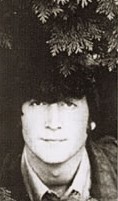 “There are places I remember.” With these introductory lyrics, John Lennon begins what most regard as a personal reflection of the first twenty-five years of his life. Although no “places” or “friends and lovers” are mentioned by name, the listener is drawn in by the reminiscent tone of his vocals along with the tender feel of the melody line and musical arrangement. By the end of the song we feel like we’ve been taken on a hand-sketched two minute and twenty-three second journey through the life of John Lennon. “There are places I remember.” With these introductory lyrics, John Lennon begins what most regard as a personal reflection of the first twenty-five years of his life. Although no “places” or “friends and lovers” are mentioned by name, the listener is drawn in by the reminiscent tone of his vocals along with the tender feel of the melody line and musical arrangement. By the end of the song we feel like we’ve been taken on a hand-sketched two minute and twenty-three second journey through the life of John Lennon.
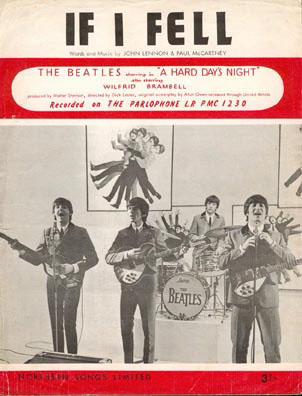 “He did have a very warm side to him really,” recalled McCartney, “which he didn’t like to show too much in case he got rejected.” Far from being rejected, the song “In My Life” has always been viewed as a respected piece of music lodged toward the end of their 1965 pop masterpiece “Rubber Soul.” John Lennon may have had the reputation of being the "rocker" in the group even during the early years but, as evidenced as early as the previous year's “If I Fell,” he periodically allowed his softer feelings to show in his writing. “He did have a very warm side to him really,” recalled McCartney, “which he didn’t like to show too much in case he got rejected.” Far from being rejected, the song “In My Life” has always been viewed as a respected piece of music lodged toward the end of their 1965 pop masterpiece “Rubber Soul.” John Lennon may have had the reputation of being the "rocker" in the group even during the early years but, as evidenced as early as the previous year's “If I Fell,” he periodically allowed his softer feelings to show in his writing.
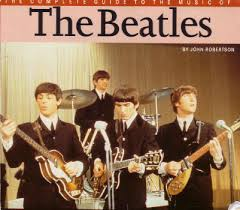 The perception of “In My Life” as a true nostalgic recollection from John was never stronger than after its writer's untimely death on December 8th, 1980. The sentiments of this song rang true as “a personal epitaph and a warm-hearted salutation to friends and lovers,” as described by author John Robertson in his book “The Complete Guide To The Music Of The Beatles.” The song was played endlessly on local radio stations throughout the world. The lyrics became all the more potent and poignant as we all exchanged accounts of how his music had touched our lives. It was only natural, even expected, that the soundtrack album to the 1988 documentary movie “Imagine: John Lennon” would feature the song. The perception of “In My Life” as a true nostalgic recollection from John was never stronger than after its writer's untimely death on December 8th, 1980. The sentiments of this song rang true as “a personal epitaph and a warm-hearted salutation to friends and lovers,” as described by author John Robertson in his book “The Complete Guide To The Music Of The Beatles.” The song was played endlessly on local radio stations throughout the world. The lyrics became all the more potent and poignant as we all exchanged accounts of how his music had touched our lives. It was only natural, even expected, that the soundtrack album to the 1988 documentary movie “Imagine: John Lennon” would feature the song.
 However, it was amidst a bit of controversy that Paul McCartney’s 1997 autobiography “Many Years From Now” (co-authored by friend Barry Miles) recounts in convincing detail how he himself played a very large part in writing the song. And not only musically, but lyrically as well. Paul’s compositional involvement was admitted by John in interviews, but only as being of minor significance. For all intents and purposes, the song “In My Life” has been considered by most to be a full-fledged "John song." Because we lost him in death, it seemed almost sacreligious to think he might not be its primary writer. However, it was amidst a bit of controversy that Paul McCartney’s 1997 autobiography “Many Years From Now” (co-authored by friend Barry Miles) recounts in convincing detail how he himself played a very large part in writing the song. And not only musically, but lyrically as well. Paul’s compositional involvement was admitted by John in interviews, but only as being of minor significance. For all intents and purposes, the song “In My Life” has been considered by most to be a full-fledged "John song." Because we lost him in death, it seemed almost sacreligious to think he might not be its primary writer.
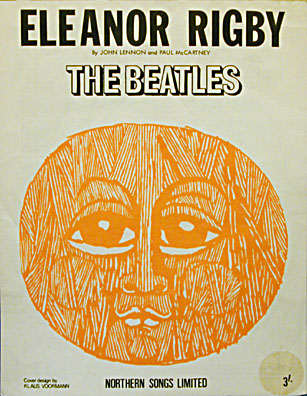 This song history has been written with the intention of presenting the facts using all of the known information up to this point. That being said, and unfortunately with John Lennon interviews that only go as far as 1980 without the ability to substantiate anything in print from Paul after that, both accounts will be discussed below in order for you, the reader, to judge for yourselves and make your own determination. Happily, throughout the entire Lennon/McCartney catalog, there appears to be only two songs, “In My Life” and “Eleanor Rigby,” that reveals substantial disagreement among its composers as to who wrote what. All authors, writers, commentators and fans will just have to accept to the fact that we’re never going to really know for sure. This song history has been written with the intention of presenting the facts using all of the known information up to this point. That being said, and unfortunately with John Lennon interviews that only go as far as 1980 without the ability to substantiate anything in print from Paul after that, both accounts will be discussed below in order for you, the reader, to judge for yourselves and make your own determination. Happily, throughout the entire Lennon/McCartney catalog, there appears to be only two songs, “In My Life” and “Eleanor Rigby,” that reveals substantial disagreement among its composers as to who wrote what. All authors, writers, commentators and fans will just have to accept to the fact that we’re never going to really know for sure.
Songwriting History
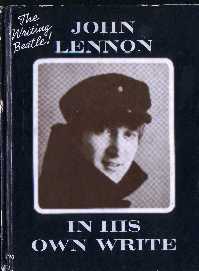 The first germ of an idea that resulted in the song “In My Life” came with an interview between John and journalist Kenneth Allsop in March of 1964. John remembers: “It was sparked by a journalist and writer in England made after (John’s book) ‘In His Own Write’ came out. He said to me 'Why don’t you put some of the way you write in the book in the songs?' or 'Why don’t you put something about your childhood into the songs?'” The first germ of an idea that resulted in the song “In My Life” came with an interview between John and journalist Kenneth Allsop in March of 1964. John remembers: “It was sparked by a journalist and writer in England made after (John’s book) ‘In His Own Write’ came out. He said to me 'Why don’t you put some of the way you write in the book in the songs?' or 'Why don’t you put something about your childhood into the songs?'”
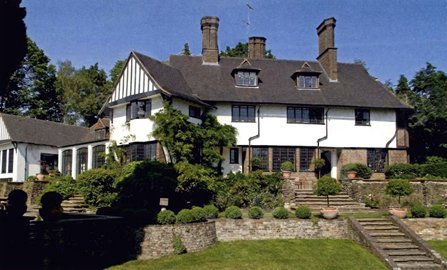 Taking this suggestion to heart, John began doing just that. "I wrote the lyrics first and then sang it," Lennon related. "That was usually the case with things like ‘In My Life’ and ‘Across The Universe’ and some of the ones that stand out a bit. I wrote it in Kenwood, upstairs." It appears, however, that Lennon had also been working on the lyrics to "In My Life" between June 20th and 22nd, 1965 during the band's visit to Paris, France while staying at the George V Hotel, the same hotel the group had previously stayed in late January of 1964 just before traveling to America for the first time. Taking this suggestion to heart, John began doing just that. "I wrote the lyrics first and then sang it," Lennon related. "That was usually the case with things like ‘In My Life’ and ‘Across The Universe’ and some of the ones that stand out a bit. I wrote it in Kenwood, upstairs." It appears, however, that Lennon had also been working on the lyrics to "In My Life" between June 20th and 22nd, 1965 during the band's visit to Paris, France while staying at the George V Hotel, the same hotel the group had previously stayed in late January of 1964 just before traveling to America for the first time.
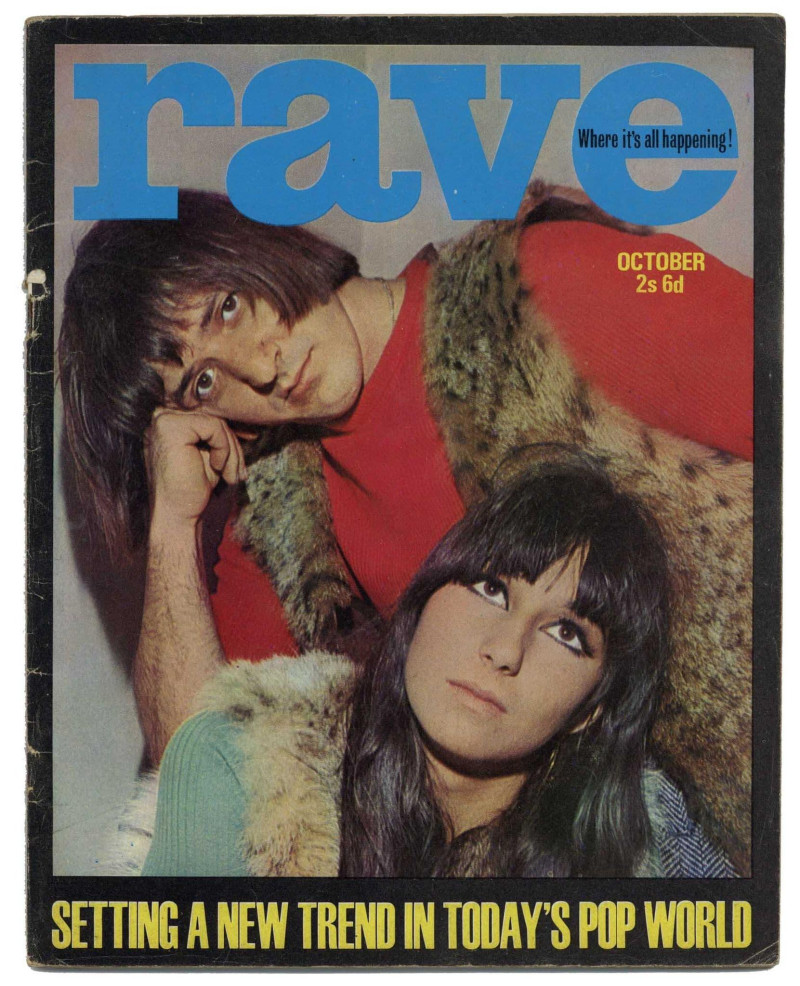 A profile of John that was published in an October, 1965 edition of Rave Magazine refers to the group's Paris visit when they were performing at the Palais des Sports arena on June 20th, 1965. "When he was last in Paris, John was eagerly working out an idea for writing songs about his Liverpool background," the article explained, "mentioning some of the local places and characters." We can easily deduce, then, that Lennon began working on what became the song "In My Life" in June of 1965 at his Kenwood home and then continued work on it at the George V Hotel in Paris later that month. The song was not considered as completely written until shortly before it was recorded in October of that year. A profile of John that was published in an October, 1965 edition of Rave Magazine refers to the group's Paris visit when they were performing at the Palais des Sports arena on June 20th, 1965. "When he was last in Paris, John was eagerly working out an idea for writing songs about his Liverpool background," the article explained, "mentioning some of the local places and characters." We can easily deduce, then, that Lennon began working on what became the song "In My Life" in June of 1965 at his Kenwood home and then continued work on it at the George V Hotel in Paris later that month. The song was not considered as completely written until shortly before it was recorded in October of that year.
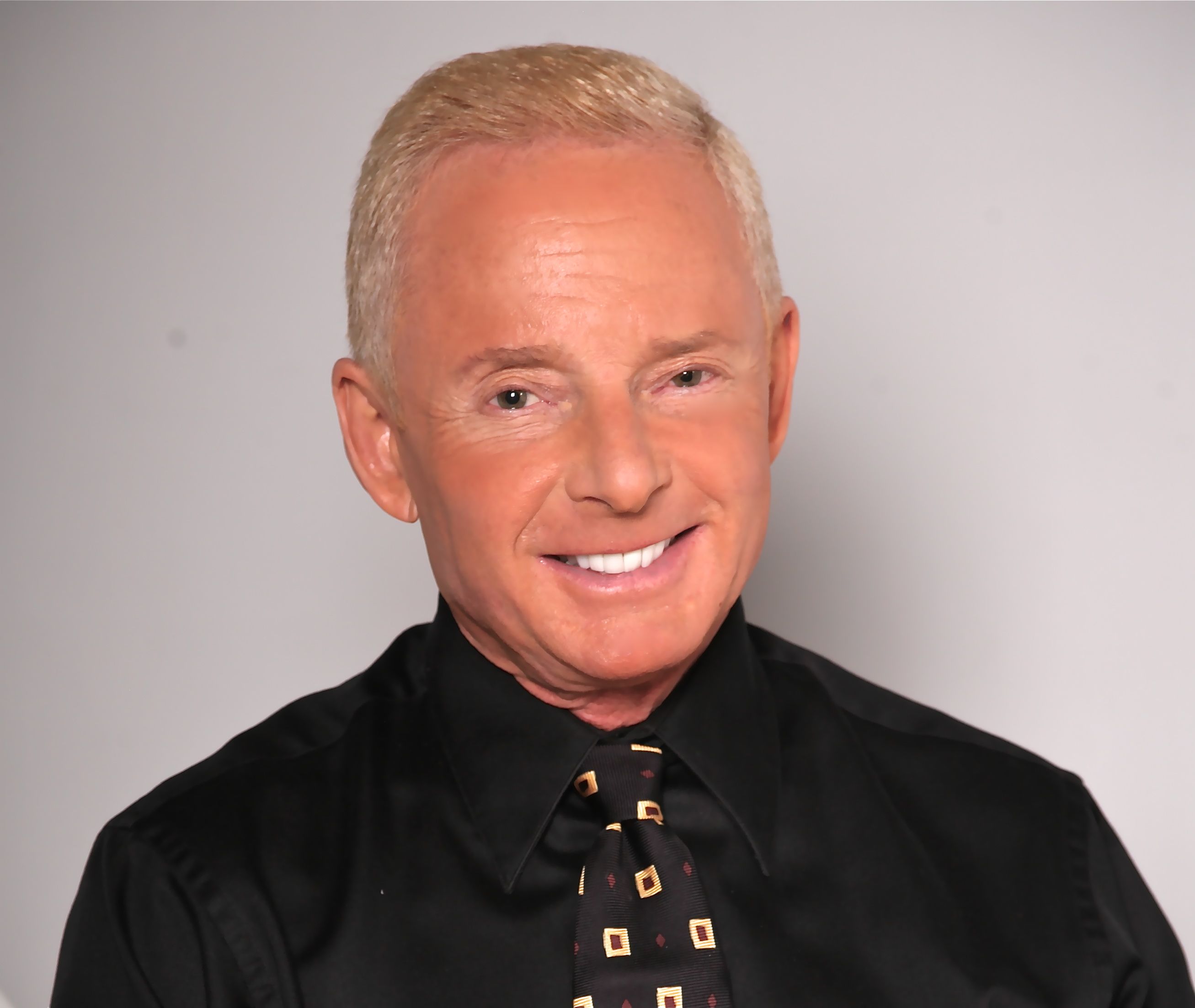 The original poem / lyric sheet for “In My Life,” which Paul remembers having the title “Places I Remember,” still exists today as found by Elliot Mintz when he was hired by Yoko Ono to carry out an inventory of John’s personal possessions after his death. Elliot Mintz explains: “It was part of a large book in which he kept all his original Beatles compositions. He had already told me about how the song was written and that he considered it a significant turning point in his writing and, just as he had described to me, the song went on at great length and included lots of place names including Penny Lane.” The original poem / lyric sheet for “In My Life,” which Paul remembers having the title “Places I Remember,” still exists today as found by Elliot Mintz when he was hired by Yoko Ono to carry out an inventory of John’s personal possessions after his death. Elliot Mintz explains: “It was part of a large book in which he kept all his original Beatles compositions. He had already told me about how the song was written and that he considered it a significant turning point in his writing and, just as he had described to me, the song went on at great length and included lots of place names including Penny Lane.”
Although John had crossed out much of what he had written, the following is what can be deciphered from that document:
“There are places I’ll remember,
All my life, tho’ some have changed,
Some forever but not for better,
Some have gone and some remain.
Penny Lane is one I’m missing,
Up Church Rd. and to the clocktower,
In the circle of the Abbey,
I have seen some happy hours.
Past the tramsheds with no trams,
On the 5 bus into town,
Past the Dutch and St. Columba's,
To the Dockers Umbrella that they pulled down.
All these places have their memories,
Some are dead and some are living.”
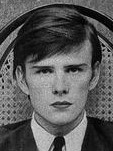 Pete Shotton, who was a close childhood friend of John Lennon, has related how he once told him that the lyric concerning friends who were “dead” and “living” were about Stuart Sutcliffe, a very close friend and former Beatle who died of a brain tumor in April of 1962, and Pete himself as the “living” friend. Pete Shotton, who was a close childhood friend of John Lennon, has related how he once told him that the lyric concerning friends who were “dead” and “living” were about Stuart Sutcliffe, a very close friend and former Beatle who died of a brain tumor in April of 1962, and Pete himself as the “living” friend.
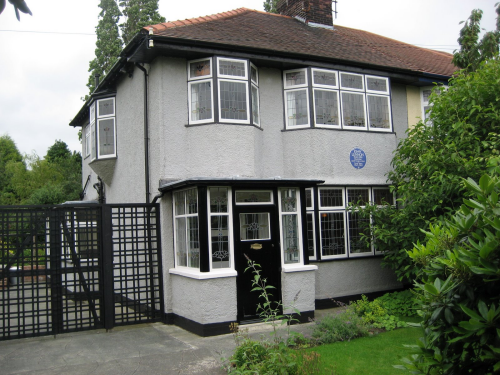 Commenting about this poem, John Lennon explained to Playboy Magazine in 1980: “’In My Life’ started out as a bus journey from my house at 251 Menlove Avenue to town, mentioning every place I could remember. I wrote it all down and it was ridiculous…It was the most boring sort of ‘What I Did On My Holiday’s Bus Trip’ song and it wasn’t working at all. But then I laid back and these lyrics started coming to me about the places I remember…I struggled for days and hours, trying to write clever lyrics. Then I gave up, and ‘In My Life’ came to me – letting it go is the whole game.” Commenting about this poem, John Lennon explained to Playboy Magazine in 1980: “’In My Life’ started out as a bus journey from my house at 251 Menlove Avenue to town, mentioning every place I could remember. I wrote it all down and it was ridiculous…It was the most boring sort of ‘What I Did On My Holiday’s Bus Trip’ song and it wasn’t working at all. But then I laid back and these lyrics started coming to me about the places I remember…I struggled for days and hours, trying to write clever lyrics. Then I gave up, and ‘In My Life’ came to me – letting it go is the whole game.”
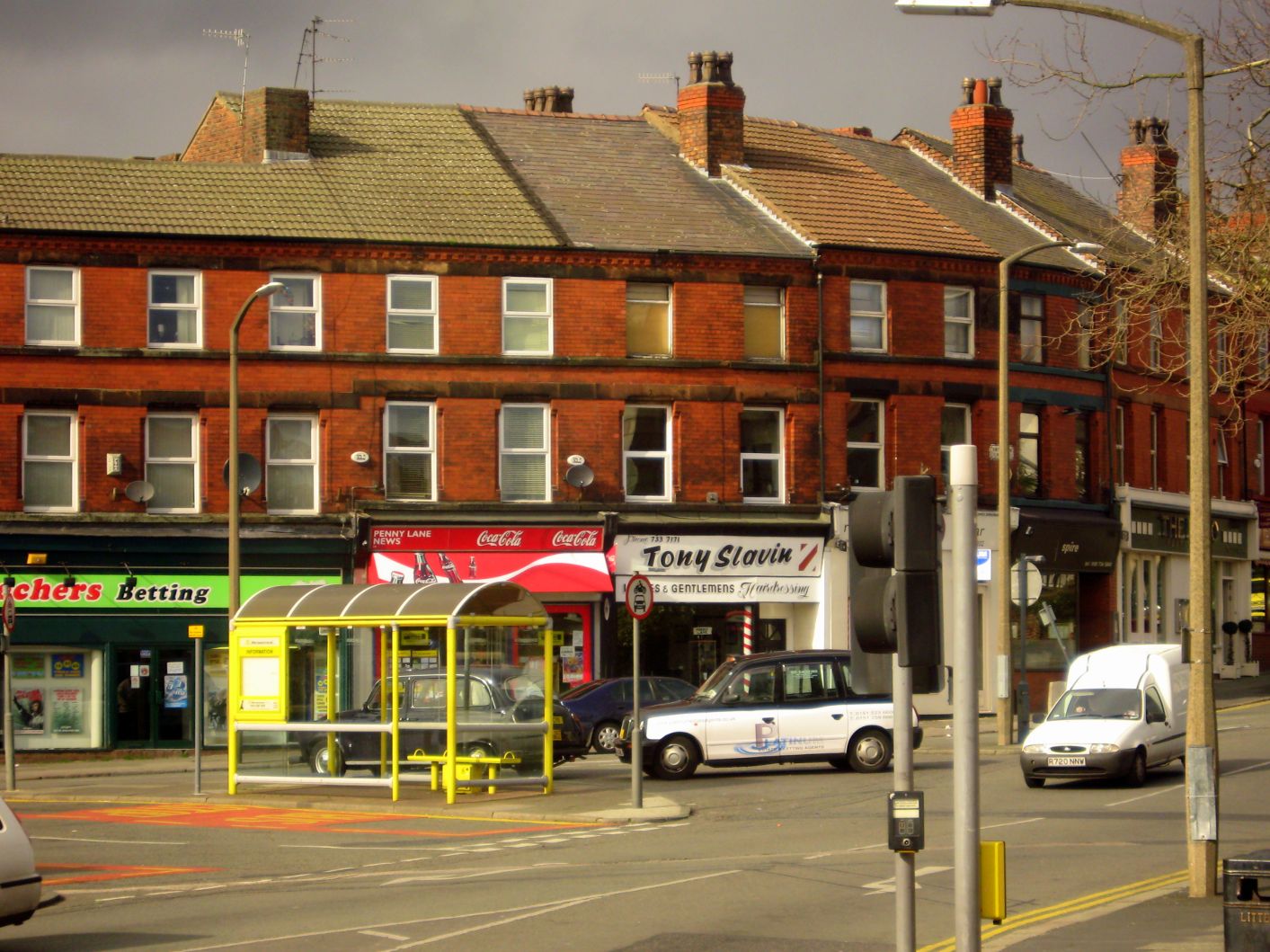 In a November 12th, 1965 interview for New Musical Express, this being not quite a month before "Rubber Soul" was released, Paul spoke of this poem as an upcoming song on their next album. He described this track as “a number about the places in Liverpool where we were born, places like Penny Lane and the Dockers’ Umbrella (which was the Liverpool Overhead Railway) have a nice sound, but when we strung them together in a composition they sounded contrived so we gave up.” In a November 12th, 1965 interview for New Musical Express, this being not quite a month before "Rubber Soul" was released, Paul spoke of this poem as an upcoming song on their next album. He described this track as “a number about the places in Liverpool where we were born, places like Penny Lane and the Dockers’ Umbrella (which was the Liverpool Overhead Railway) have a nice sound, but when we strung them together in a composition they sounded contrived so we gave up.”
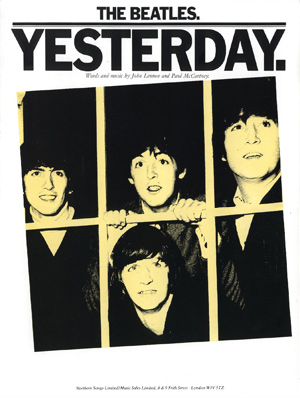 One may notice that Paul here describes these lines as if he had composed them with John, but when examining the many interviews they gave during their heyday, both John and Paul put forth great efforts to portray the “Lennon / McCartney” partnership as collaborative with every song released. Lennon, for instance, spoke of the song “Yesterday” in 1965 explaining “before we finally completed it” and “we almost had it finished” about it's writing, when in later years he readily admitted it was entirely a Paul composition. Therefore, we can easily assume that Lennon had indeed composed the “Places I Remember” poem by himself. One may notice that Paul here describes these lines as if he had composed them with John, but when examining the many interviews they gave during their heyday, both John and Paul put forth great efforts to portray the “Lennon / McCartney” partnership as collaborative with every song released. Lennon, for instance, spoke of the song “Yesterday” in 1965 explaining “before we finally completed it” and “we almost had it finished” about it's writing, when in later years he readily admitted it was entirely a Paul composition. Therefore, we can easily assume that Lennon had indeed composed the “Places I Remember” poem by himself.
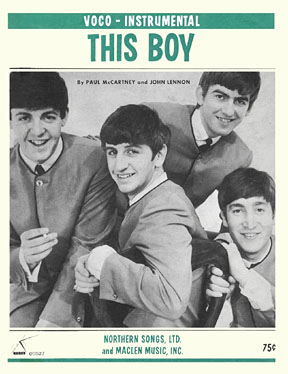 During a writing session arranged between John and Paul to complete songs for what was to become their “Rubber Soul” album, John premiered his poem to Paul. This is where the discrepancies begin to appear. Note the following comment from John in 1980 about the melody used for “In My Life.” He stated: “There was a period when I thought I didn’t write melodies; that Paul wrote those and I just wrote straight, shouting rock’n’roll. But of course, when I think of some of my own songs – ‘In My Life,’ or some of the early stuff, ‘This Boy’ – I was writing melody with the best of them.” From this, John appears to claim the melody of “In My Life” as his own creation entirely. He also made the statement that year in regards to this song: “Paul helped with the middle eight, musically.” On another occasion, John stated “The whole lyrics were already written before Paul even heard it. In ‘In My Life’ his contribution melodically was the harmony and the middle-eight itself” During a writing session arranged between John and Paul to complete songs for what was to become their “Rubber Soul” album, John premiered his poem to Paul. This is where the discrepancies begin to appear. Note the following comment from John in 1980 about the melody used for “In My Life.” He stated: “There was a period when I thought I didn’t write melodies; that Paul wrote those and I just wrote straight, shouting rock’n’roll. But of course, when I think of some of my own songs – ‘In My Life,’ or some of the early stuff, ‘This Boy’ – I was writing melody with the best of them.” From this, John appears to claim the melody of “In My Life” as his own creation entirely. He also made the statement that year in regards to this song: “Paul helped with the middle eight, musically.” On another occasion, John stated “The whole lyrics were already written before Paul even heard it. In ‘In My Life’ his contribution melodically was the harmony and the middle-eight itself”
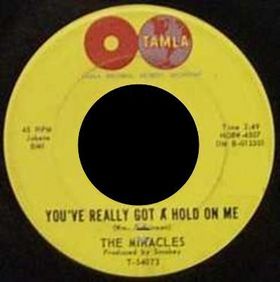 However, in the 1997 book “Many Years From Now,” Paul gives this vivid recollection of that very writing session at John’s Kenwood home, probably in early October of 1965: “I’ll give my memories of writing ‘In My Life.’ I arrived at John’s house for a writing session and he had the very nice opening stanzas of the song…That was what John had. But as I recall, he didn’t have a tune to it, and my recollection, I think, is at variance with John’s. I said, ‘Well, you haven’t got a tune, let me just go and work on it.’ And I went down to the half-landing, where John had a Mellotron, and I sat there and put together a tune based in my mind on Smokey Robinson and The Miracles. Songs like ‘You’ve Really Got A Hold On Me’ and ‘Tears Of A Clown’ had really been a big influence. You refer back to something you’ve loved and try and take the spirit of that and write something new." However, in the 1997 book “Many Years From Now,” Paul gives this vivid recollection of that very writing session at John’s Kenwood home, probably in early October of 1965: “I’ll give my memories of writing ‘In My Life.’ I arrived at John’s house for a writing session and he had the very nice opening stanzas of the song…That was what John had. But as I recall, he didn’t have a tune to it, and my recollection, I think, is at variance with John’s. I said, ‘Well, you haven’t got a tune, let me just go and work on it.’ And I went down to the half-landing, where John had a Mellotron, and I sat there and put together a tune based in my mind on Smokey Robinson and The Miracles. Songs like ‘You’ve Really Got A Hold On Me’ and ‘Tears Of A Clown’ had really been a big influence. You refer back to something you’ve loved and try and take the spirit of that and write something new."
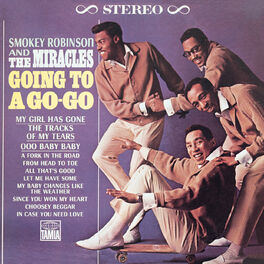 McCartney added: “So I recall writing the whole melody. And it actually does sound very like me, if you analyze it. I was obviously working to the lyrics. The melody’s structure is very me. So my recollection is saying to John, ‘Just go and have a cup of tea or something. Let me be with this for ten minutes on my own and I’ll do it.’ And with the inspiration of Smokey (Robinson) and The Miracles, I tried to keep it melodic but a bit bluesy, with the minors and little harmonies, and then my recollection is going back up into the room and saying, ‘Got it, great! Good tune, I think. What d’you think?’ John said, ‘Nice,’ and we continued working with it from then, using that melody and filling out the rest of the verses. As usual, for these co-written things, he often just had the first verse, which was always enough: it was the direction, it was the signpost and it was the inspiration for the whole song. I hate the word but it was the template." McCartney added: “So I recall writing the whole melody. And it actually does sound very like me, if you analyze it. I was obviously working to the lyrics. The melody’s structure is very me. So my recollection is saying to John, ‘Just go and have a cup of tea or something. Let me be with this for ten minutes on my own and I’ll do it.’ And with the inspiration of Smokey (Robinson) and The Miracles, I tried to keep it melodic but a bit bluesy, with the minors and little harmonies, and then my recollection is going back up into the room and saying, ‘Got it, great! Good tune, I think. What d’you think?’ John said, ‘Nice,’ and we continued working with it from then, using that melody and filling out the rest of the verses. As usual, for these co-written things, he often just had the first verse, which was always enough: it was the direction, it was the signpost and it was the inspiration for the whole song. I hate the word but it was the template."
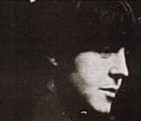 Paul added: “We wrote it, and in my memory we tagged on the introduction, which I think I thought up. I was imaging the intro of a Miracles record, and to my mind the phrases on guitar are very much Smokey and The Miracles. So it was John’s original inspiration, I think my melody, I think my guitar riff. I don’t want to be categorical about this. But that’s my recollection. We then finished it off and it was a fine song which John sang.” Paul added: “We wrote it, and in my memory we tagged on the introduction, which I think I thought up. I was imaging the intro of a Miracles record, and to my mind the phrases on guitar are very much Smokey and The Miracles. So it was John’s original inspiration, I think my melody, I think my guitar riff. I don’t want to be categorical about this. But that’s my recollection. We then finished it off and it was a fine song which John sang.”
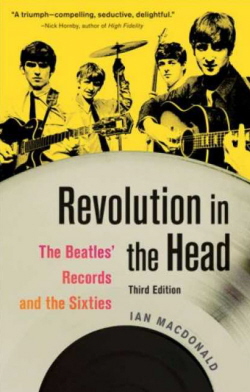 As we can see from the original manuscript of his poem, the lyrics changed quite dramatically before it got to its final form, making the song much more generic and less specific. As for the melodic structure of the song, many commentators are quick to point out the similarities in style to McCartney compositions. Most noteworthy is the scholarly writing of Ian MacDonald in his book “Revolution In The Head,” which speaks of the songs’ “angular verticality, spanning an octave in typically wide – and difficult – leaps (which) certainly shows more of (McCartney’s) touch than Lennon’s.” However, the third edition of this book counters with the added comment: “On the other hand, the chromatic descent, via the minor subdominant, in the second half of the verse suggests Lennon. Perhaps McCartney did the first half of the verse, Lennon the second?” Therefore, maybe Lennon did have a hand in the melody as he always insisted. As we can see from the original manuscript of his poem, the lyrics changed quite dramatically before it got to its final form, making the song much more generic and less specific. As for the melodic structure of the song, many commentators are quick to point out the similarities in style to McCartney compositions. Most noteworthy is the scholarly writing of Ian MacDonald in his book “Revolution In The Head,” which speaks of the songs’ “angular verticality, spanning an octave in typically wide – and difficult – leaps (which) certainly shows more of (McCartney’s) touch than Lennon’s.” However, the third edition of this book counters with the added comment: “On the other hand, the chromatic descent, via the minor subdominant, in the second half of the verse suggests Lennon. Perhaps McCartney did the first half of the verse, Lennon the second?” Therefore, maybe Lennon did have a hand in the melody as he always insisted.
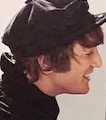 An interesting observation can be made when examining the lyric manuscript that was made after John and Paul completed the composition. It was all written in one person’s handwriting, is titled “In My Life (New Song),” and has only one signature at the bottom: “John Lennon”! An interesting observation can be made when examining the lyric manuscript that was made after John and Paul completed the composition. It was all written in one person’s handwriting, is titled “In My Life (New Song),” and has only one signature at the bottom: “John Lennon”!
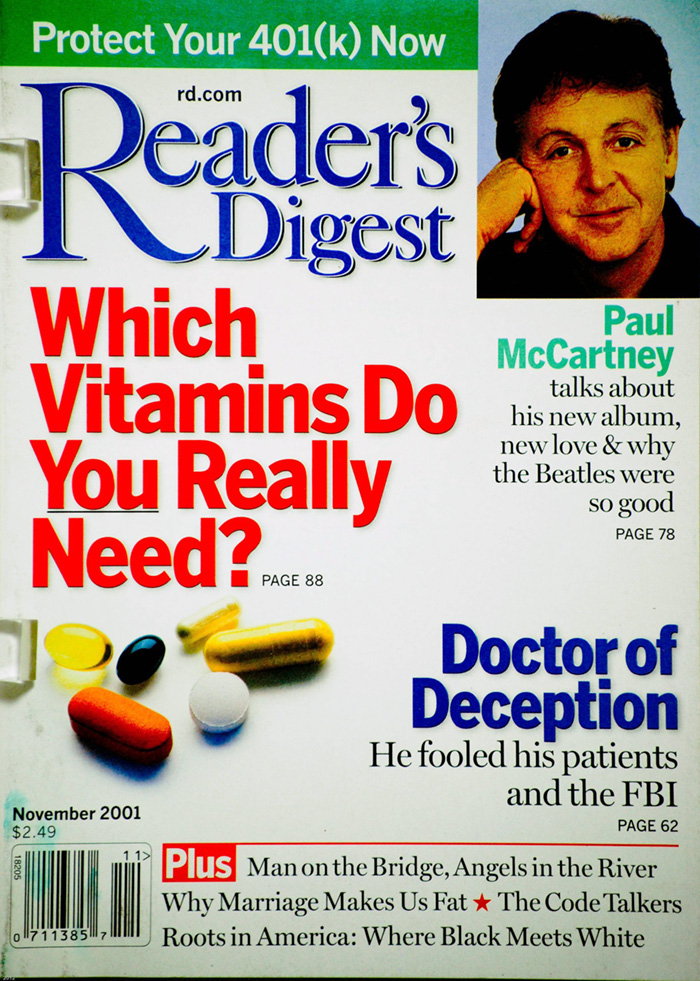 A couple of final thoughts on the matter include a 1973 interview Paul did with Rolling Stone Magazine in which he was asked what his favorite Lennon / McCartney songs were. His first response was: "I liked 'In My Life.' Those were words that John wrote and I wrote the tune to it." Then, in a 2001 Readers' Digest article, after McCartney discussed the controversy about him wanting top billing in the 'Lennon / McCartney' catolog on songs where he was the primary songwriter, he acquiesced to let John have his way regarding "In My Life." Concerning the melody, Paul stated: "I think I wrote it, but John thinks he wrote it. So, you know what? He can have it. One out of 200!" A couple of final thoughts on the matter include a 1973 interview Paul did with Rolling Stone Magazine in which he was asked what his favorite Lennon / McCartney songs were. His first response was: "I liked 'In My Life.' Those were words that John wrote and I wrote the tune to it." Then, in a 2001 Readers' Digest article, after McCartney discussed the controversy about him wanting top billing in the 'Lennon / McCartney' catolog on songs where he was the primary songwriter, he acquiesced to let John have his way regarding "In My Life." Concerning the melody, Paul stated: "I think I wrote it, but John thinks he wrote it. So, you know what? He can have it. One out of 200!"
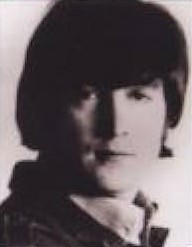 At any rate, John was always very proud of the song. He once stated: “’In My Life’ was, I think, my first real, major piece of work. Up until then it had all been glib and throw-away. I had one mind that wrote books and another that churned out things about ‘I love you’ and ‘you love me,’ because that’s how Paul and I did it…It was the first song that I wrote that was really, consciously, about my life…a remembrance of friends and lovers of the past.” At any rate, John was always very proud of the song. He once stated: “’In My Life’ was, I think, my first real, major piece of work. Up until then it had all been glib and throw-away. I had one mind that wrote books and another that churned out things about ‘I love you’ and ‘you love me,’ because that’s how Paul and I did it…It was the first song that I wrote that was really, consciously, about my life…a remembrance of friends and lovers of the past.”
Recording History
 October 18th, 1965 was their fourth recording session for the “Rubber Soul” album. This session was just over three hours long, which was quite short these days for Beatles sessions. However, quite a lot was accomplished in this short amount of time. The band entered EMI Studio Two at 2:30 pm and began by adding vocal overdubs and tambourine to George’s “If I Needed Someone” which they began recording two days earlier, these tasks being completed in about an hour. Then the band began rehearsing their newest song “In My Life” to get the arrangement perfected before the tapes started rolling. October 18th, 1965 was their fourth recording session for the “Rubber Soul” album. This session was just over three hours long, which was quite short these days for Beatles sessions. However, quite a lot was accomplished in this short amount of time. The band entered EMI Studio Two at 2:30 pm and began by adding vocal overdubs and tambourine to George’s “If I Needed Someone” which they began recording two days earlier, these tasks being completed in about an hour. Then the band began rehearsing their newest song “In My Life” to get the arrangement perfected before the tapes started rolling.
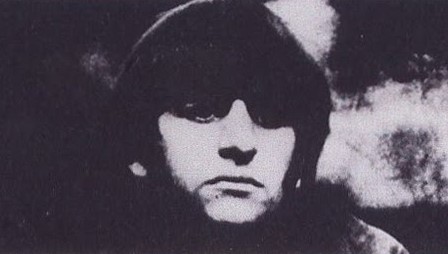 Three takes were made of the rhythm track, which comprised John playing rhythm on his Fender Stratocaster, George playing the lead guitar riffs and his rhythmic strums on his Fender Stratocaster, Paul on bass and Ringo on drums playing an interesting syncopated rhythm, all of this being captured onto track one of the four-track tape. Simultaneous to this, John and Paul performed their vocal parts onto track two of the tape. "Take one" was a complete rendition of the song, John commenting on his and George's Stratocasters before the take began, "this is so heavy too...these Fenders are so heavy." Paul counts off this first take, measure six of each bridge featuring the D major chord (as on the lyric "some are living"), something they decided to alter soon afterward. This take is nearly perfect apart from John chuckling for some reason in the final bridge on the lyric "people and things." While "take two" broke down early, "take three" was the keeper. Interestingly, a decision was made to change the D major chord in the sixth measure of each bridge over to B major, which can be viewed as the completion to the songwriting of "In My Life." Three takes were made of the rhythm track, which comprised John playing rhythm on his Fender Stratocaster, George playing the lead guitar riffs and his rhythmic strums on his Fender Stratocaster, Paul on bass and Ringo on drums playing an interesting syncopated rhythm, all of this being captured onto track one of the four-track tape. Simultaneous to this, John and Paul performed their vocal parts onto track two of the tape. "Take one" was a complete rendition of the song, John commenting on his and George's Stratocasters before the take began, "this is so heavy too...these Fenders are so heavy." Paul counts off this first take, measure six of each bridge featuring the D major chord (as on the lyric "some are living"), something they decided to alter soon afterward. This take is nearly perfect apart from John chuckling for some reason in the final bridge on the lyric "people and things." While "take two" broke down early, "take three" was the keeper. Interestingly, a decision was made to change the D major chord in the sixth measure of each bridge over to B major, which can be viewed as the completion to the songwriting of "In My Life."
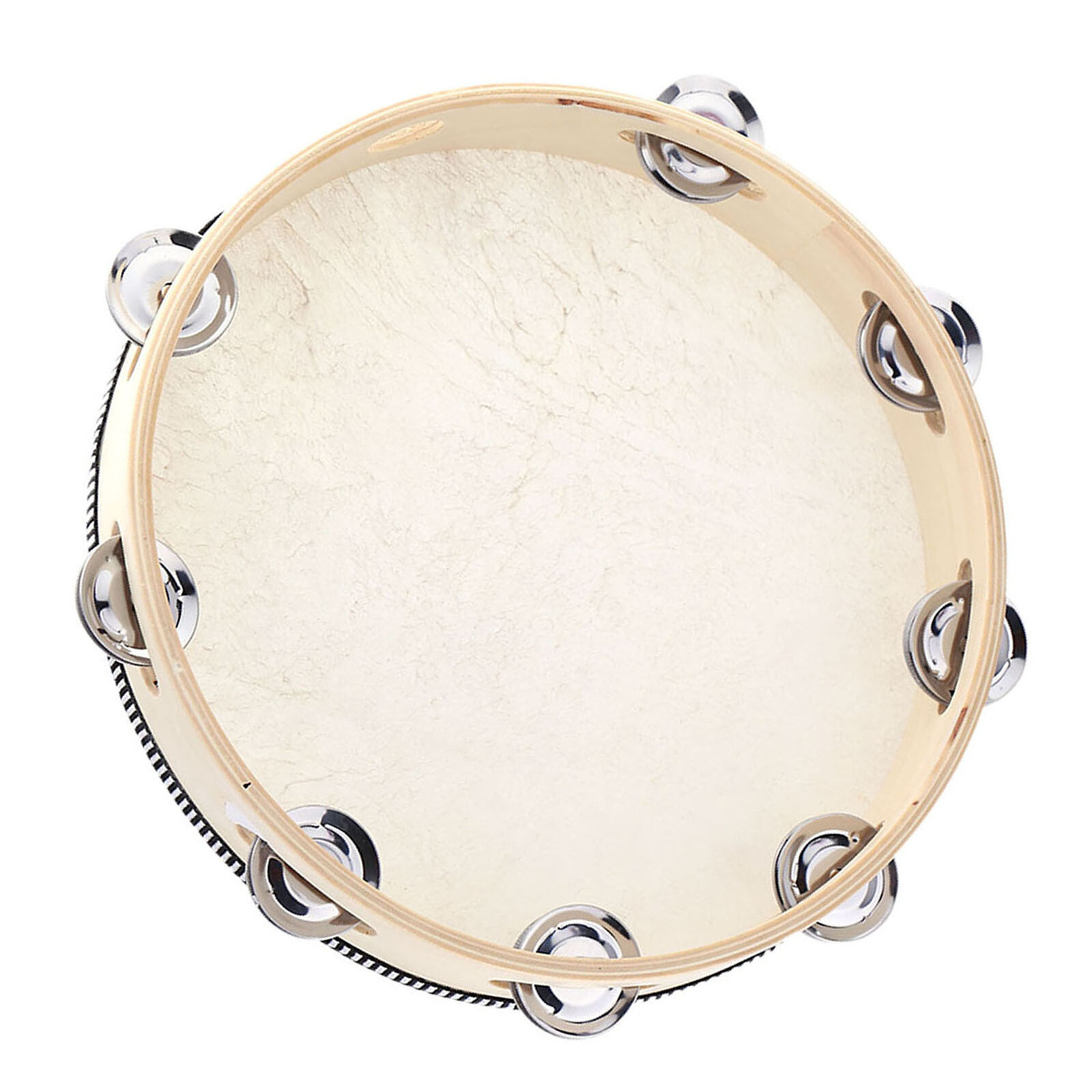 The Beatles immediately began the overdubbing process, John double-tracking his lead vocals, this entailing some skill on his part in order to match up his concluding vocal line “I love you more” with what he previously sang during their rhythm track. Also overdubbed was Paul and George singing backing vocals and Ringo playing a tambourine during the bridge. At 5:45 pm, the session was done for the day. The Beatles immediately began the overdubbing process, John double-tracking his lead vocals, this entailing some skill on his part in order to match up his concluding vocal line “I love you more” with what he previously sang during their rhythm track. Also overdubbed was Paul and George singing backing vocals and Ringo playing a tambourine during the bridge. At 5:45 pm, the session was done for the day.
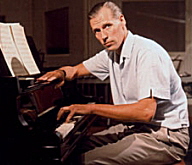 Only one more thing was needed to complete the song. George Martin explained: “There was a gap in the song, and I said, ‘We need a solo here.’” John suggested for George Martin to supply one himself. “In ‘In My Life’ there’s an Elizabethan piano solo,” Lennon stated in 1970. “We’d do things like that. We’d say, ‘Play it like Bach,’ or, ‘Could you put twelve bars in there?’” With that vague instruction, George Martin was left to come up with something on another day. Only one more thing was needed to complete the song. George Martin explained: “There was a gap in the song, and I said, ‘We need a solo here.’” John suggested for George Martin to supply one himself. “In ‘In My Life’ there’s an Elizabethan piano solo,” Lennon stated in 1970. “We’d do things like that. We’d say, ‘Play it like Bach,’ or, ‘Could you put twelve bars in there?’” With that vague instruction, George Martin was left to come up with something on another day.
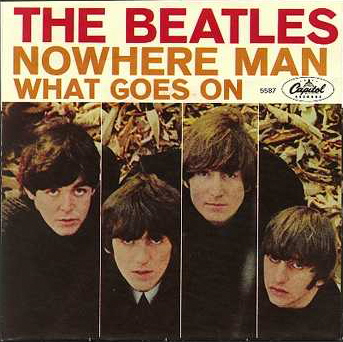 “There’s a bit where John couldn’t decide what to do in the middle,” George Martin remembered. Although he relates how he recorded the resulting solo for this section “while they were having their tea-break,” this was actually done four days later on October 22nd, 1965. The Beatles were due to arrive at EMI Studio Two on that day to work on “Nowhere Man” at 2:30 pm, but George Martin secured the studio earlier in the day, from 10:30 to 11:30 am, to superimpose a solo of some sort. “There’s a bit where John couldn’t decide what to do in the middle,” George Martin remembered. Although he relates how he recorded the resulting solo for this section “while they were having their tea-break,” this was actually done four days later on October 22nd, 1965. The Beatles were due to arrive at EMI Studio Two on that day to work on “Nowhere Man” at 2:30 pm, but George Martin secured the studio earlier in the day, from 10:30 to 11:30 am, to superimpose a solo of some sort.
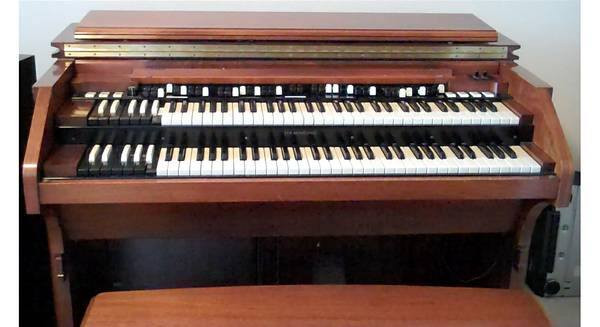 “I wrote something like a Bach inversion, and played it, then recorded it,” George Martin explained. But he first had to decide what instrument to use. According to what was written on the EMI tape box for that day, he first tried it on a Hammond organ. Feeling that wasn’t the right sound, he tried his solo on a piano. “I wrote something like a Bach inversion, and played it, then recorded it,” George Martin explained. But he first had to decide what instrument to use. According to what was written on the EMI tape box for that day, he first tried it on a Hammond organ. Feeling that wasn’t the right sound, he tried his solo on a piano.
 In a 1990 BBC radio show called “Sounds Of The Sixties,” George Martin gave some interesting details about the solo in this song: “It was quite common practice for us to do a track and leave a hole in the middle for the solo. Sometimes George would pick up his guitar and fool around and do a solo, and we would often try to get other sounds. On ‘In My Life’ we left the hole as usual. In a 1990 BBC radio show called “Sounds Of The Sixties,” George Martin gave some interesting details about the solo in this song: “It was quite common practice for us to do a track and leave a hole in the middle for the solo. Sometimes George would pick up his guitar and fool around and do a solo, and we would often try to get other sounds. On ‘In My Life’ we left the hole as usual.
 "While they were away, I thought it would be rather nice to have a harpsichord-like solo…I did it with what I call a ‘wound up’ piano, which was at double-speed – partly because you get a harpsichord sound by shortening the attack of everything, but also because I couldn’t play it at real speed anyway. So I played it on piano at exactly half normal speed, and down an octave. When you bring the tape back to normal speed again, it sounds pretty brilliant. It’s a means of tricking everybody into thinking you can do something really well.” Being satisfied himself, the only thing left was for The Beatles to approve. “I played it back to them when they returned, and they said, ‘That’s great!’ So, we left it like that.” "While they were away, I thought it would be rather nice to have a harpsichord-like solo…I did it with what I call a ‘wound up’ piano, which was at double-speed – partly because you get a harpsichord sound by shortening the attack of everything, but also because I couldn’t play it at real speed anyway. So I played it on piano at exactly half normal speed, and down an octave. When you bring the tape back to normal speed again, it sounds pretty brilliant. It’s a means of tricking everybody into thinking you can do something really well.” Being satisfied himself, the only thing left was for The Beatles to approve. “I played it back to them when they returned, and they said, ‘That’s great!’ So, we left it like that.”
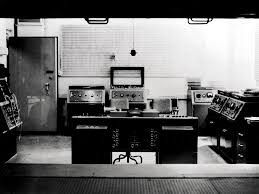 The mono mix of “In My Life” was made on October 25th, 1965 in the control room of EMI Studio Two by George Martin and engineers Norman Smith and Ken Scott. The first stereo mix was made the following day, October 26th, 1965, in the control room of the same studio with George Martin, Norman Smith and second engineer Ron Pender. Interestingly, as an existing acetate pressing shows, the running order of "Rubber Soul" at this point placed "In My Life" as the third song on side one after "Nowhere Man," this decision being changed shortly thereafter. The mono mix of “In My Life” was made on October 25th, 1965 in the control room of EMI Studio Two by George Martin and engineers Norman Smith and Ken Scott. The first stereo mix was made the following day, October 26th, 1965, in the control room of the same studio with George Martin, Norman Smith and second engineer Ron Pender. Interestingly, as an existing acetate pressing shows, the running order of "Rubber Soul" at this point placed "In My Life" as the third song on side one after "Nowhere Man," this decision being changed shortly thereafter.
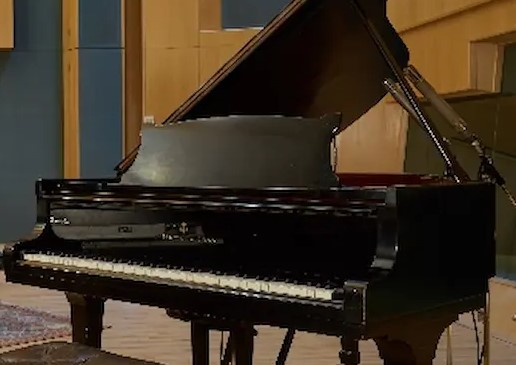 This stereo mix places the entire rhythm track and the separate tambourine overdub track on the left channel. The right channel contains all of the vocal overdubs (with slight reverb) as well as George Martin’s piano solo. A small bleed over of the rhythm track can be heard on the right channel due to it being played in the studio for The Beatles to sing along with, being picked up by their microphones. When the vocals were complete toward the end of the song, the engineers faded down the right channel so the bleed over disappeared during the final seconds. This stereo mix places the entire rhythm track and the separate tambourine overdub track on the left channel. The right channel contains all of the vocal overdubs (with slight reverb) as well as George Martin’s piano solo. A small bleed over of the rhythm track can be heard on the right channel due to it being played in the studio for The Beatles to sing along with, being picked up by their microphones. When the vocals were complete toward the end of the song, the engineers faded down the right channel so the bleed over disappeared during the final seconds.
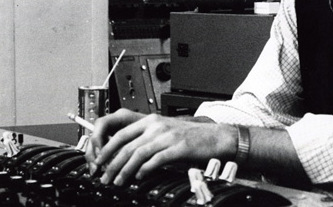 As it turns out, George Martin’s piano solo happened to have been played on the same track as the existing tambourine overdub. While they were creating this first stereo mix, they needed to pan that track from the left channel, where the tambourine had normally been heard, to the right channel where they wanted the piano solo to be heard. After the solo, they needed to quickly pan that track back over to the left channel immediately because the tambourine comes in on the very next beat. They didn’t pan it quick enough, so the first beat of the tambourine is heard in the right channel before they had a chance to get it back to the left channel. As it turns out, George Martin’s piano solo happened to have been played on the same track as the existing tambourine overdub. While they were creating this first stereo mix, they needed to pan that track from the left channel, where the tambourine had normally been heard, to the right channel where they wanted the piano solo to be heard. After the solo, they needed to quickly pan that track back over to the left channel immediately because the tambourine comes in on the very next beat. They didn’t pan it quick enough, so the first beat of the tambourine is heard in the right channel before they had a chance to get it back to the left channel.
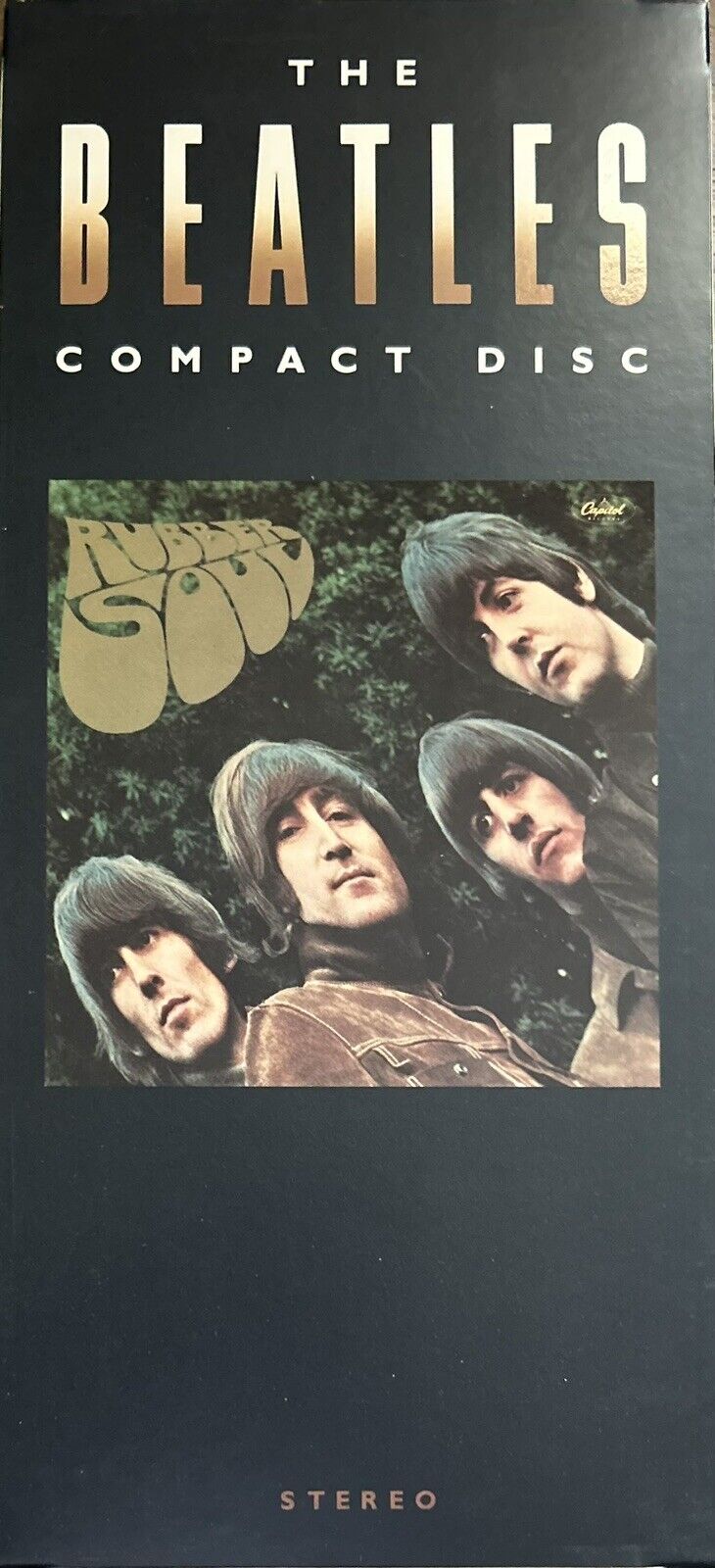 In 1986, George Martin returned to the master tapes to create a second stereo mix of the song for the 1987 released “Rubber Soul” album on compact disc. This mix differs from the first stereo mix in a few ways. First of all, the vocals have a fair percentage more reverb than before and are panned slightly more to the left, giving it a slightly centered effect. This time around, they panned the piano solo very quickly back to the left channel so the tambourine comes in on the downbeat of the correct measure. Also, the drums are slightly quieter during the verses in this new stereo mix. In 1986, George Martin returned to the master tapes to create a second stereo mix of the song for the 1987 released “Rubber Soul” album on compact disc. This mix differs from the first stereo mix in a few ways. First of all, the vocals have a fair percentage more reverb than before and are panned slightly more to the left, giving it a slightly centered effect. This time around, they panned the piano solo very quickly back to the left channel so the tambourine comes in on the downbeat of the correct measure. Also, the drums are slightly quieter during the verses in this new stereo mix.
 There are also a couple of small but noticeable differences in the 1986 stereo mix concerning John’s vocal track. The first is the absence of John’s intake of breath just before he starts singing at the beginning of the song, which is present in the 1965 stereo mix. Second, George Martin decided to leave the vocal track up on the right channel at the end of the song instead of fading it out as he had done in the original stereo mix. These are very minor anomalies but are worthy of mention. There are also a couple of small but noticeable differences in the 1986 stereo mix concerning John’s vocal track. The first is the absence of John’s intake of breath just before he starts singing at the beginning of the song, which is present in the 1965 stereo mix. Second, George Martin decided to leave the vocal track up on the right channel at the end of the song instead of fading it out as he had done in the original stereo mix. These are very minor anomalies but are worthy of mention.
 Sometime in 2025, George Martin's son Giles Martin, along with engineers Joe Wyatt and Greg McAllister, created a mix of "take one" of the original EMI sessions of "In My Life" for inclusion on "Anthology 4," this LP being released in various editions that year, these being described below. Sometime in 2025, George Martin's son Giles Martin, along with engineers Joe Wyatt and Greg McAllister, created a mix of "take one" of the original EMI sessions of "In My Life" for inclusion on "Anthology 4," this LP being released in various editions that year, these being described below.
Song Structure and Style
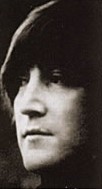 To define what structure “In My Life” falls into is a complex task and varies from one source to another. Lennon referring to the second and fourth sections of the song as a “middle-eight” may give us a hint, so for the sake of analysis we’ll call these sections bridges instead of refrains. Therefore, the structure would consist of ‘verse/ bridge/ verse/ bridge/ verse (solo)/ bridge’ (or ababab). A fitting introduction, an interjected half-introduction after the first bridge, and a climactic conclusion are also included. To define what structure “In My Life” falls into is a complex task and varies from one source to another. Lennon referring to the second and fourth sections of the song as a “middle-eight” may give us a hint, so for the sake of analysis we’ll call these sections bridges instead of refrains. Therefore, the structure would consist of ‘verse/ bridge/ verse/ bridge/ verse (solo)/ bridge’ (or ababab). A fitting introduction, an interjected half-introduction after the first bridge, and a climactic conclusion are also included.
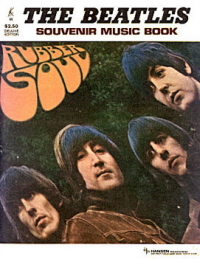 A four-measure introduction is heard first which is actually a two measure guitar riff (written by McCartney and played by Harrison) repeated twice with Lennon’s rhythm guitar in the background. McCartney’s bass is also present with some interesting ascending runs to compliment the arrangement. With a slight intake of breath from John (in the 1965 mixes), the syncopated drums and three-part harmony vocals kick in for the eight-measure first verse that follows. The background vocalists harmonize the lyrics with John’s double-tracked vocals on every other line starting with “There are places I remember,” while they “oooh” during the conclusion of each thought, as when John finishes the line “all my life, though some have changed.” A four-measure introduction is heard first which is actually a two measure guitar riff (written by McCartney and played by Harrison) repeated twice with Lennon’s rhythm guitar in the background. McCartney’s bass is also present with some interesting ascending runs to compliment the arrangement. With a slight intake of breath from John (in the 1965 mixes), the syncopated drums and three-part harmony vocals kick in for the eight-measure first verse that follows. The background vocalists harmonize the lyrics with John’s double-tracked vocals on every other line starting with “There are places I remember,” while they “oooh” during the conclusion of each thought, as when John finishes the line “all my life, though some have changed.”
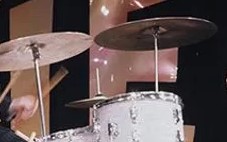 The first eight-measure bridge repeats the harmony pattern although they drop the “oooh”s to allow John to finish the thought by himself. The syncopated drums are replaced by gentle four-in-the-bar cymbal taps and tambourine shakes for measures one, two, five and six, each set ending with a simple fill. The remaining measures of the bridge introduce a traditional rock beat riding the bell of the ride cymbal. John’s rhythm guitar strums are elongated to add fluency to the track. The first eight-measure bridge repeats the harmony pattern although they drop the “oooh”s to allow John to finish the thought by himself. The syncopated drums are replaced by gentle four-in-the-bar cymbal taps and tambourine shakes for measures one, two, five and six, each set ending with a simple fill. The remaining measures of the bridge introduce a traditional rock beat riding the bell of the ride cymbal. John’s rhythm guitar strums are elongated to add fluency to the track.
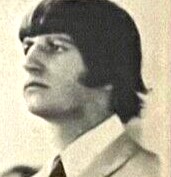 After the bridge, Ringo Starr immediately jumps back into the syncopated drum pattern as a two-measure reprise of the introduction is next heard as a spacer before the second verse. Otherwise, the same ingredients as heard in the intro are repeated but only with one phrase instead of two this time around. After the bridge, Ringo Starr immediately jumps back into the syncopated drum pattern as a two-measure reprise of the introduction is next heard as a spacer before the second verse. Otherwise, the same ingredients as heard in the intro are repeated but only with one phrase instead of two this time around.
 A second eight-measure verse is then heard which is identical in structure and arrangement to the first verse but with different lyrics. A second bridge then follows which is also structurally identical but with new lyrics. One noticeable difference is the filling out of the syllables in the harmonized vocal lines. In the first bridge, most words take up two syllables each, such as on “dead and some are,” while the second bridge usually fills out each syllable, such as with “I know I’ll often stop and think about them.” A second eight-measure verse is then heard which is identical in structure and arrangement to the first verse but with different lyrics. A second bridge then follows which is also structurally identical but with new lyrics. One noticeable difference is the filling out of the syllables in the harmonized vocal lines. In the first bridge, most words take up two syllables each, such as on “dead and some are,” while the second bridge usually fills out each syllable, such as with “I know I’ll often stop and think about them.”
A new eight-measure verse follows right after this bridge, which this time is taken up by George Martin’s incredible baroque keyboard solo. The final note of his double-timed downward run hits on the same beat that John begins singing “Though I know I’ll never lose affection,” thereby introducing a repeat of the second bridge, which is essentially the same structurally and instrumentally.
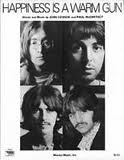 After this is complete, the conclusion of the song begins, which starts out with a further half-reprise of the introduction as heard between the first bridge and second verse. After this, the song hangs in the air as Lennon jumps into falsetto for the first time in the song, repeating the final line of the last verse, namely “In my life…” After we lose the tempo of the song momentarily (not unlike what he does three years later in “Happiness Is A Warm Gun”), John finishes the line “I love you more” in his normal voice but with a stagnant beat to create an emotional impact on the listener. This is followed by a final repeat of the introductory line and then one final concluding phrase as a bow to satisfyingly end the song. After this is complete, the conclusion of the song begins, which starts out with a further half-reprise of the introduction as heard between the first bridge and second verse. After this, the song hangs in the air as Lennon jumps into falsetto for the first time in the song, repeating the final line of the last verse, namely “In my life…” After we lose the tempo of the song momentarily (not unlike what he does three years later in “Happiness Is A Warm Gun”), John finishes the line “I love you more” in his normal voice but with a stagnant beat to create an emotional impact on the listener. This is followed by a final repeat of the introductory line and then one final concluding phrase as a bow to satisfyingly end the song.
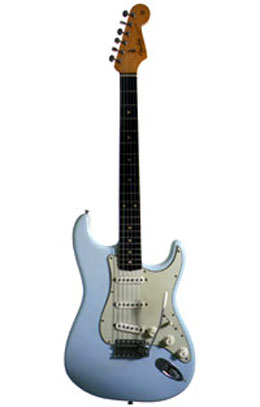 With such an intimate song as “In My Life,” one would expect Lennon to don his Gibson acoustic guitar as he had done on many “Rubber Soul” tracks. Surprisingly, yet appropriately, John picks up an electric guitar, probably his 1961 Sonic Blue Fender Stratocaster, to play his flowing, yet subtle, rhythm guitar part. John’s most noteworthy contribution to the song, however, was his double-tracked lead vocals which convincingly deliver the nostalgic lyrics and touch a nerve with the listener in the process. With such an intimate song as “In My Life,” one would expect Lennon to don his Gibson acoustic guitar as he had done on many “Rubber Soul” tracks. Surprisingly, yet appropriately, John picks up an electric guitar, probably his 1961 Sonic Blue Fender Stratocaster, to play his flowing, yet subtle, rhythm guitar part. John’s most noteworthy contribution to the song, however, was his double-tracked lead vocals which convincingly deliver the nostalgic lyrics and touch a nerve with the listener in the process.
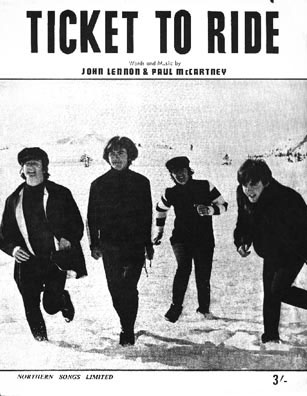 McCartney may take a backseat in the proceedings but his presence is definitely felt. His bass work adds nuances throughout the song that work with the arrangement while not becoming too busy. Paul's other contributions are his superbly performed harmonies and, one can assume from recent examples such as on the song “Ticket To Ride,” what are probably his suggestions to Ringo concerning the syncopated drum beat he plays. McCartney may take a backseat in the proceedings but his presence is definitely felt. His bass work adds nuances throughout the song that work with the arrangement while not becoming too busy. Paul's other contributions are his superbly performed harmonies and, one can assume from recent examples such as on the song “Ticket To Ride,” what are probably his suggestions to Ringo concerning the syncopated drum beat he plays.
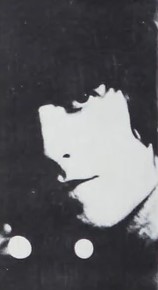 Speaking of which, Ringo is always keen to play appropriately to any occasion, this time with a delicate smoothness on drums and tambourine that doesn’t detract from John’s vocal delivery. George once again plays a minor role here, one of background vocalist and lead guitarist, although his playing is only heard briefly four times in the song. This is, however, delivered perfectly despite a stray note appearing after the final note of the song is heard. The note does fit and was included, no doubt, to help contribute to the intimate feel of the song. Speaking of which, Ringo is always keen to play appropriately to any occasion, this time with a delicate smoothness on drums and tambourine that doesn’t detract from John’s vocal delivery. George once again plays a minor role here, one of background vocalist and lead guitarist, although his playing is only heard briefly four times in the song. This is, however, delivered perfectly despite a stray note appearing after the final note of the song is heard. The note does fit and was included, no doubt, to help contribute to the intimate feel of the song.
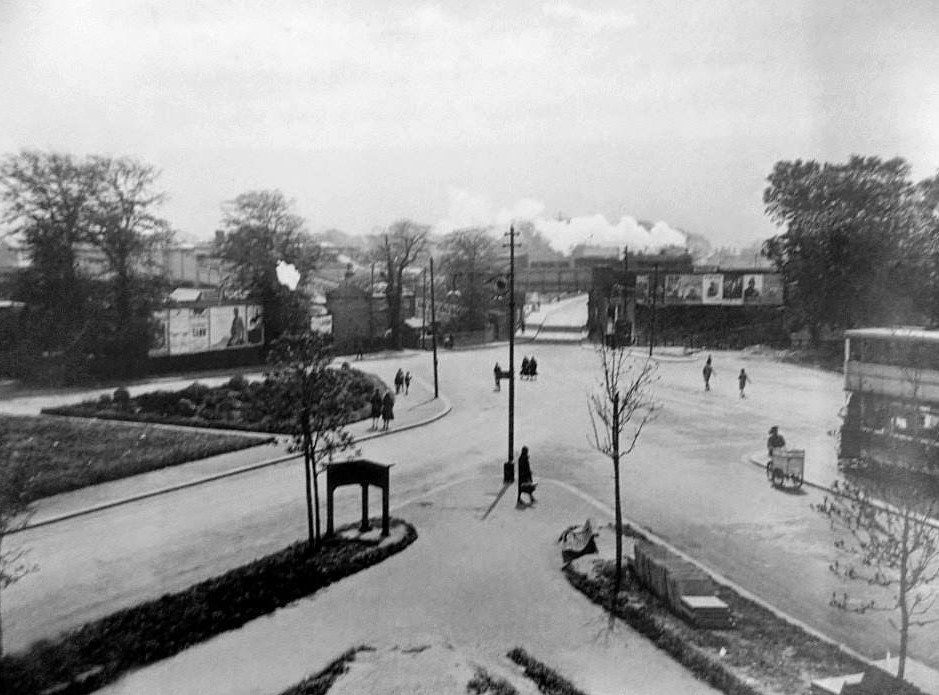 Lennon’s powerful delivery works so well in this song because of the immensely nostalgic contents of the lyrics. At some point in everyone’s life, we all wish to revisit the old town or neighborhood to see how things presently look. We inevitably find that “some have changed” and “not for better,” some buildings and homes being completely torn down or remodeled beyond recognition. But we’re always happy to find that “some remain” exactly how we remember them, which may then bring a tear to our eye. After all, “all these places had their moments with lovers and friends,” and those "good old days" come rushing back to us. Then our focus turns to the people as we begin to wonder whatever happened to them. “Some are dead and some are living,” but we wouldn’t trade those memories for anything. We “loved them all.” Lennon’s powerful delivery works so well in this song because of the immensely nostalgic contents of the lyrics. At some point in everyone’s life, we all wish to revisit the old town or neighborhood to see how things presently look. We inevitably find that “some have changed” and “not for better,” some buildings and homes being completely torn down or remodeled beyond recognition. But we’re always happy to find that “some remain” exactly how we remember them, which may then bring a tear to our eye. After all, “all these places had their moments with lovers and friends,” and those "good old days" come rushing back to us. Then our focus turns to the people as we begin to wonder whatever happened to them. “Some are dead and some are living,” but we wouldn’t trade those memories for anything. We “loved them all.”
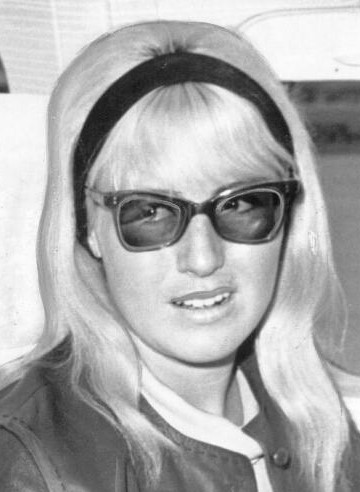 The nostalgic trip of the song then switches gears to the present time, which shows that we don’t just live in the past but appreciate where life has lead us up to this point in life. As may be our experience, John addresses his current partner saying that none of “these friends and lovers” of the past “compares with you.” Although he will always cherish his formative years and all of these experiences, “these memories lose their meaning” in comparison with the happiness of the present day. Like us, he will “often stop and think about them” from time to time but, as John relates in falsetto as a climax to the song, “In my life, I love you more.” The nostalgic trip of the song then switches gears to the present time, which shows that we don’t just live in the past but appreciate where life has lead us up to this point in life. As may be our experience, John addresses his current partner saying that none of “these friends and lovers” of the past “compares with you.” Although he will always cherish his formative years and all of these experiences, “these memories lose their meaning” in comparison with the happiness of the present day. Like us, he will “often stop and think about them” from time to time but, as John relates in falsetto as a climax to the song, “In my life, I love you more.”
It is no wonder that Lennon viewed this song as his “first real, major piece of work.”
American Releases
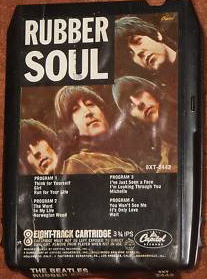 December 6th, 1965 was when US audiences first got to hear “In My Life” as an album track on Capitol’s version of “Rubber Soul.” Its placement after the rousing conclusion to “I’m Looking Through You” definitely made the emotional nature of the song stand out to be taken notice of. This US version of "Rubber Soul" was released on an individual compact disc on January 21, 2014, both the mono and stereo versions of the album being contained on a single CD. December 6th, 1965 was when US audiences first got to hear “In My Life” as an album track on Capitol’s version of “Rubber Soul.” Its placement after the rousing conclusion to “I’m Looking Through You” definitely made the emotional nature of the song stand out to be taken notice of. This US version of "Rubber Soul" was released on an individual compact disc on January 21, 2014, both the mono and stereo versions of the album being contained on a single CD.
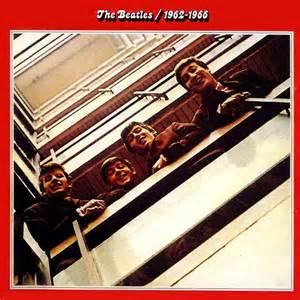 An astonishing six tracks were taken from the British “Rubber Soul” album to be included on their first official compilation album, namely “The Beatles/1962-1966” (aka “The Red Album”). The popularity of “In My Life” had already taken its hold on Beatles fans by 1973, thereby its inclusion on this April 19th, 1973 released double album was a given. This album's first compact disc release was on September 20th, 1993, "In My Life" also being included on the composite "Red Album / Blue Album" promotional sampler that came out simultaneously. A remastered "Red Album" was then released on August 10th, 2010. An astonishing six tracks were taken from the British “Rubber Soul” album to be included on their first official compilation album, namely “The Beatles/1962-1966” (aka “The Red Album”). The popularity of “In My Life” had already taken its hold on Beatles fans by 1973, thereby its inclusion on this April 19th, 1973 released double album was a given. This album's first compact disc release was on September 20th, 1993, "In My Life" also being included on the composite "Red Album / Blue Album" promotional sampler that came out simultaneously. A remastered "Red Album" was then released on August 10th, 2010.
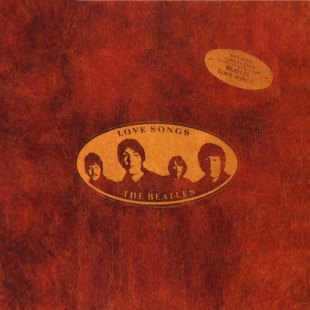 While they were in the habit of constructing double-album compilations, Capitol released “Love Songs” on October 21st, 1977. Eight of the tracks on this set were repeats of songs included on either of the 1973 compilation albums, one of which was “In My Life.” Although an official new stereo mix was not made at this point, the vocals had been artificially panned closer to the center of the channels on this release, this being easily accomplished by simply panning the right channel nearer to the center. While they were in the habit of constructing double-album compilations, Capitol released “Love Songs” on October 21st, 1977. Eight of the tracks on this set were repeats of songs included on either of the 1973 compilation albums, one of which was “In My Life.” Although an official new stereo mix was not made at this point, the vocals had been artificially panned closer to the center of the channels on this release, this being easily accomplished by simply panning the right channel nearer to the center.
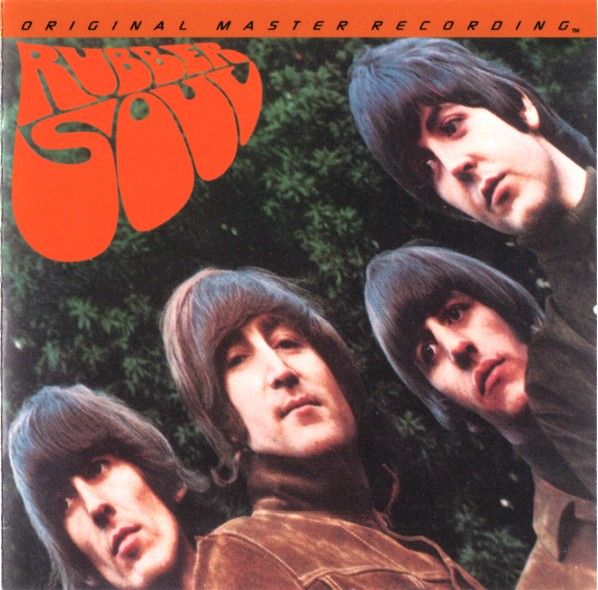 The first time the original British "Rubber Soul” album was made available in America was as the "Original Master Recording" vinyl edition released through Mobile Fidelity Sound Lab in June of 1984. This album included "In My Life" and was prepared utilizing half-speed mastering technology from the original master tape on loan from EMI. This version of the album was only available for a short time and is quite collectible today. The first time the original British "Rubber Soul” album was made available in America was as the "Original Master Recording" vinyl edition released through Mobile Fidelity Sound Lab in June of 1984. This album included "In My Life" and was prepared utilizing half-speed mastering technology from the original master tape on loan from EMI. This version of the album was only available for a short time and is quite collectible today.
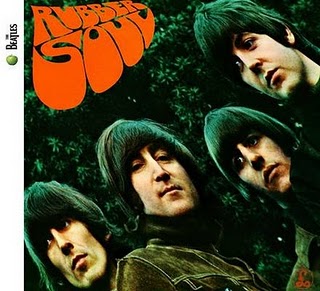 George Martin created a new stereo mix of the song with more centered vocals in 1986, this being included on the first compact disc release of “Rubber Soul” on April 30th, 1987 and on the vinyl edition on July 21st, 1987. This album, which introduced the fourteen-track sequence of the British release in America for the first time, was then remastered and re-released on September 9th, 2009 on CD and on November 13th, 2012 on vinyl. George Martin created a new stereo mix of the song with more centered vocals in 1986, this being included on the first compact disc release of “Rubber Soul” on April 30th, 1987 and on the vinyl edition on July 21st, 1987. This album, which introduced the fourteen-track sequence of the British release in America for the first time, was then remastered and re-released on September 9th, 2009 on CD and on November 13th, 2012 on vinyl.
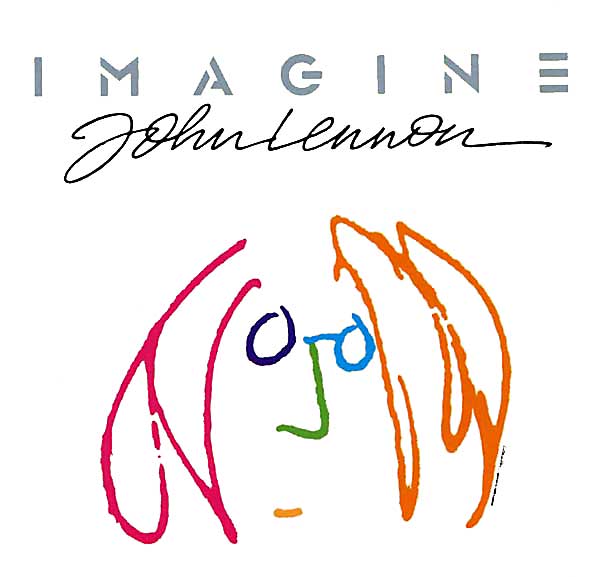 “In My Life” was also included on the album “Imagine: John Lennon,” which was the soundtrack to a documentary movie that saw national release in 1988. The soundtrack album was released on October 10th, 1988 and included nine Beatles songs, this being one of them. “In My Life” was also included on the album “Imagine: John Lennon,” which was the soundtrack to a documentary movie that saw national release in 1988. The soundtrack album was released on October 10th, 1988 and included nine Beatles songs, this being one of them.
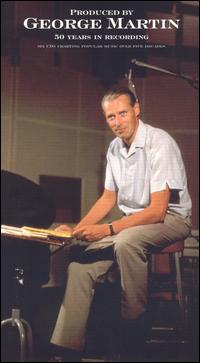 On July 17th, 2001, Capitol Records came out with a 6 CD box set entitled "Produced By George Martin," this being an extensive selection of George Martin productions from throughout his career. Because of his impressive production and double-speed piano solo, "In My Life" was included on "Disc Three (That Was The Decade That Was)." On July 17th, 2001, Capitol Records came out with a 6 CD box set entitled "Produced By George Martin," this being an extensive selection of George Martin productions from throughout his career. Because of his impressive production and double-speed piano solo, "In My Life" was included on "Disc Three (That Was The Decade That Was)."
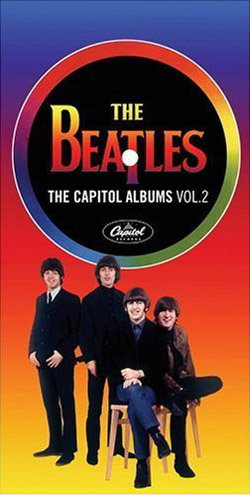 On November 16th, 2004, Capitol released the second in its series of Beatles CD box sets containing the original stereo and mono mixes of the American albums. This set, entitled “The Capitol Albums, Vol. 2,” contains the entire “Rubber Soul” album with its original US track listing. Although the original mono mix of “In My Life” was accidentally not contained on the first pressing of the set, substituted by a “fold-down” mix of the original stereo mix, the differences are so miniscule that it's hardly even worth a mention here. Nevertheless, the real 1965 mono mix can be obtained in later pressings of this set. On November 16th, 2004, Capitol released the second in its series of Beatles CD box sets containing the original stereo and mono mixes of the American albums. This set, entitled “The Capitol Albums, Vol. 2,” contains the entire “Rubber Soul” album with its original US track listing. Although the original mono mix of “In My Life” was accidentally not contained on the first pressing of the set, substituted by a “fold-down” mix of the original stereo mix, the differences are so miniscule that it's hardly even worth a mention here. Nevertheless, the real 1965 mono mix can be obtained in later pressings of this set.
 Another place to obtain this mix is on the box set “The Beatles In Mono,” which contains the entire mono Beatles catalog. This September 9th, 2009 released CD set also includes the original 1965 stereo mix with the vocals panned entirely onto the right channel, as featured on the Capitol box set mentioned in the previous paragraph. The vinyl edition of "The Beatles In Mono" was first released on September 9th, 2014. Another place to obtain this mix is on the box set “The Beatles In Mono,” which contains the entire mono Beatles catalog. This September 9th, 2009 released CD set also includes the original 1965 stereo mix with the vocals panned entirely onto the right channel, as featured on the Capitol box set mentioned in the previous paragraph. The vinyl edition of "The Beatles In Mono" was first released on September 9th, 2014.
In promotion of the 2014 box set "The US Albums," a 25-song sampler CD was manufactured for limited release on January 21st, 2014, this containing the stereo mix of "In My Life."
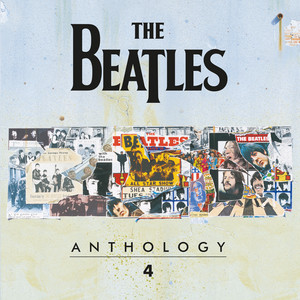 On November 21st, 2025, "Anthology 4" was released on both CD and vinyl, this album also being made available within the "Anthology Collection" box set on CD and on vinyl. "Take one" of "In My Life" as recorded at EMI Studio Two on October 18th, 1965, as detailed above, was included on this release. On November 21st, 2025, "Anthology 4" was released on both CD and vinyl, this album also being made available within the "Anthology Collection" box set on CD and on vinyl. "Take one" of "In My Life" as recorded at EMI Studio Two on October 18th, 1965, as detailed above, was included on this release.
Live Performances
With the inclusion of George Martin’s intricate piano solo recorded in double-time, “In My Life” was always thought to be a "Rubber Soul" album track with no consideration of it ever being performed live.
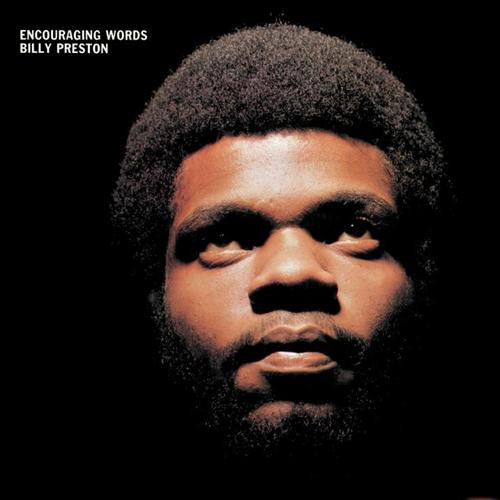 However, this is not to say that it never was. Astoundingly, George thought to work up a version of “In My Life” and performed it with his band during his 1974 North American Tour. His rendition is drawn out over five minutes with bluesy lead guitar playing and a keyboard solo by band member Billy Preston. The most noteworthy element here, though, is his ending the second bridge with the line “In my life I love God more,” which caused many to view this version with much disdain. Through hoarse vocal cords, George does dedicate the performance to his former band-mates with the words “God bless John Lennon, Paul and Ringo.” However, this is not to say that it never was. Astoundingly, George thought to work up a version of “In My Life” and performed it with his band during his 1974 North American Tour. His rendition is drawn out over five minutes with bluesy lead guitar playing and a keyboard solo by band member Billy Preston. The most noteworthy element here, though, is his ending the second bridge with the line “In my life I love God more,” which caused many to view this version with much disdain. Through hoarse vocal cords, George does dedicate the performance to his former band-mates with the words “God bless John Lennon, Paul and Ringo.”
Conclusion
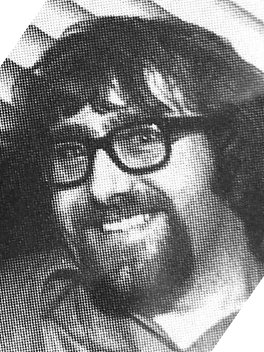 Although the exact collaborative nature of “In My Life” is cloaked in controversy that will probably never be fully resolved, the song itself is testimony to the true genius of the Lennon / McCartney songwriting team. By late 1965, they had surely come a long way. Their early experimentations with songwriting may have been as explained by George Martin, saying “they stole unashamedly from existing records.” However, as Paul humbly admits, “John and I were writing quite well by 1965…around the time of 'Rubber Soul.'" Beatles road manager Mal Evans agreed, stating in a December 1975 interview with Ken Doyle: "I love 'In My Life,' it's my all-time favorite. Something magical about it." Although the exact collaborative nature of “In My Life” is cloaked in controversy that will probably never be fully resolved, the song itself is testimony to the true genius of the Lennon / McCartney songwriting team. By late 1965, they had surely come a long way. Their early experimentations with songwriting may have been as explained by George Martin, saying “they stole unashamedly from existing records.” However, as Paul humbly admits, “John and I were writing quite well by 1965…around the time of 'Rubber Soul.'" Beatles road manager Mal Evans agreed, stating in a December 1975 interview with Ken Doyle: "I love 'In My Life,' it's my all-time favorite. Something magical about it."
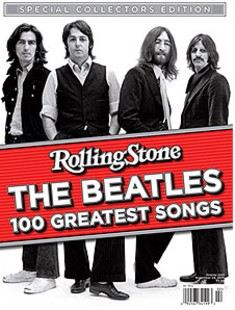 This opinion was never more fully verified than by "In My Life" coming in at #5 in Rolling Stone Magazine's “The Beatles 100 Greatest Songs” special edition of 2010. Even 45 years after its initial release, the respect for “In My Life” is monumental. We can only expect this to continue for many future years to come. This opinion was never more fully verified than by "In My Life" coming in at #5 in Rolling Stone Magazine's “The Beatles 100 Greatest Songs” special edition of 2010. Even 45 years after its initial release, the respect for “In My Life” is monumental. We can only expect this to continue for many future years to come.
Song Summary
“In My Life”
Written by: John Lennon / Paul McCartney
-
Song Written: June to October, 1965
-
Song Recorded: October 18 & 22, 1965
-
First US Release Date: December 6, 1965
-
-
US Single Release: n/a
-
Highest Chart Position: n/a
-
British Album Release: Parlophone #PCS 3075 “Rubber Soul”
-
Length: 2:23
-
Key: A major
-
Producer: George Martin
-
Engineers: Norman Smith, Ken Scott, Stuart Eltham, Mike Stone
Instrumentation (most likely):
-
John Lennon - Lead Vocals, Rhythm Guitar (1961 Sonic Blue Fender Stratocaster)
-
Paul McCartney - Bass Guitar (1964 Rickenbacker 4001S), Harmony Vocals
-
George Harrison – Lead Guitar (1961 Sonic Blue Fender Stratocaster), harmony vocals
-
Ringo Starr – Drums (1965 Ludwig Super Classic Black Oyster Pearl), tambourine
-
George Martin - Piano (Hamburg Steinway Baby Grand)
Written and compiled by Dave Rybaczewski
|
IF YOU WOULD LIKE TO MAKE A DONATION TO KEEP THIS WEBSITE UP AND RUNNING, PLEASE CLICK BELOW!
Sign Up Below for our MONTHLY BEATLES TRIVIA QUIZ!
|